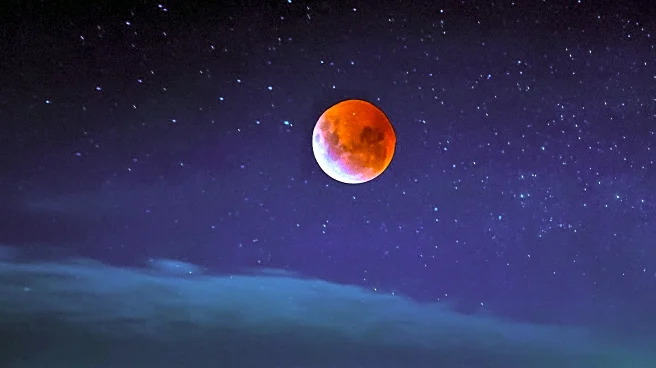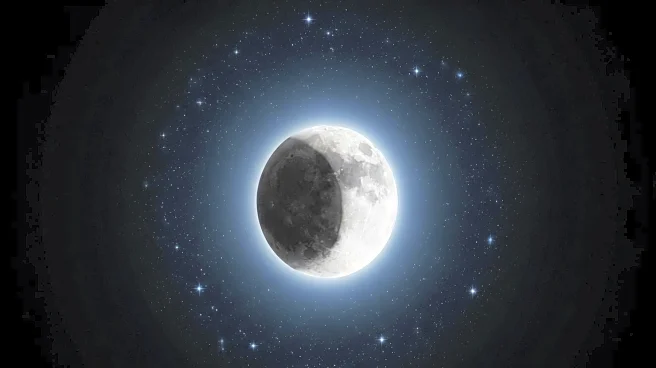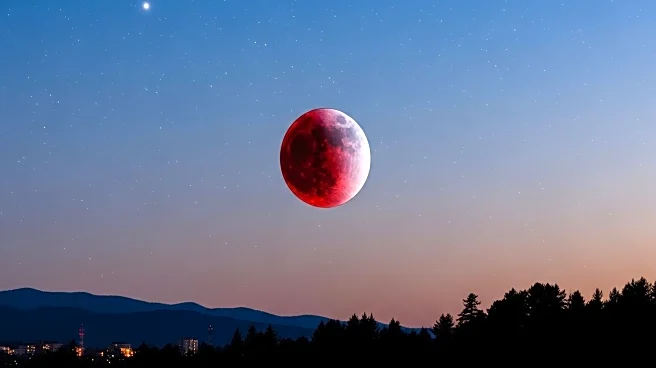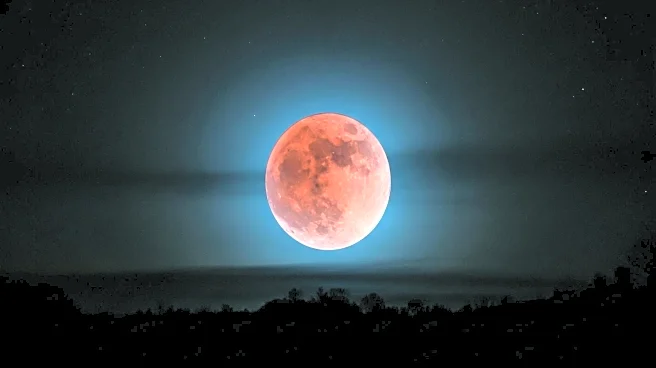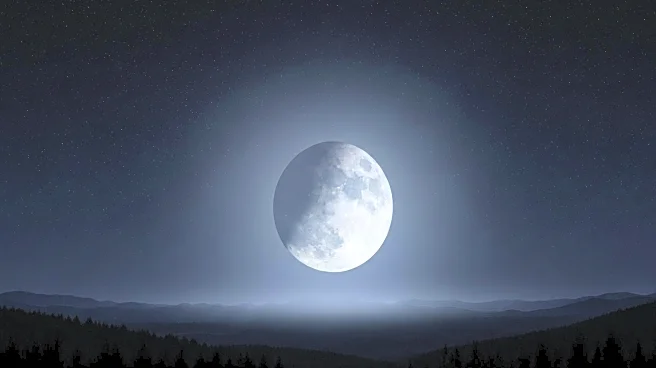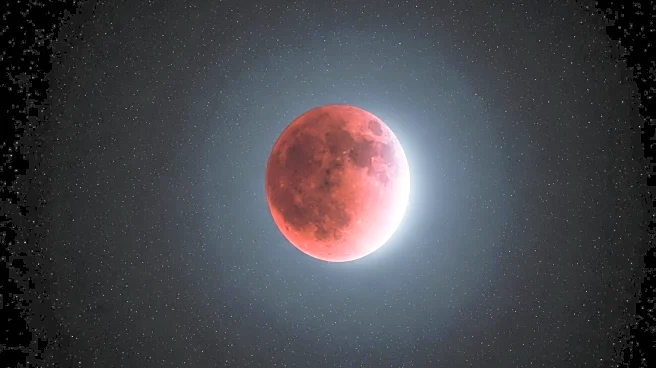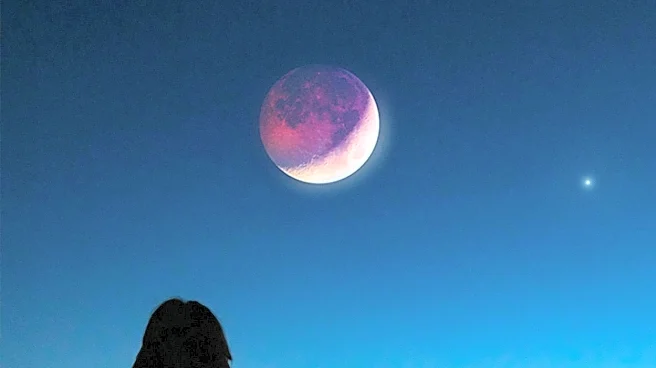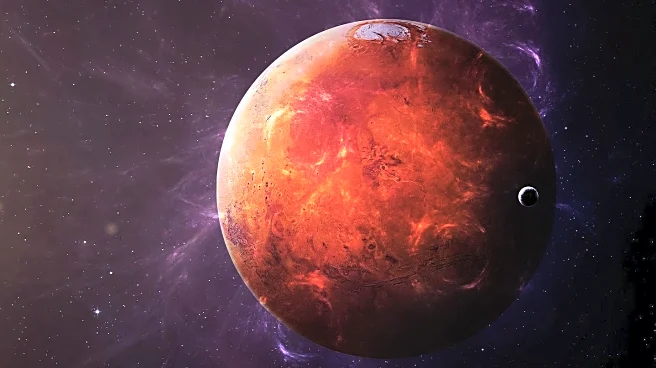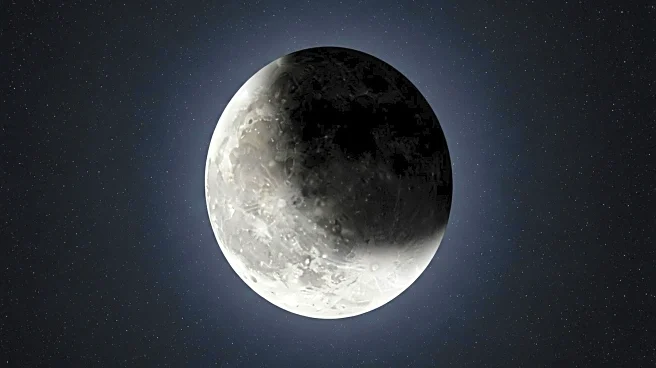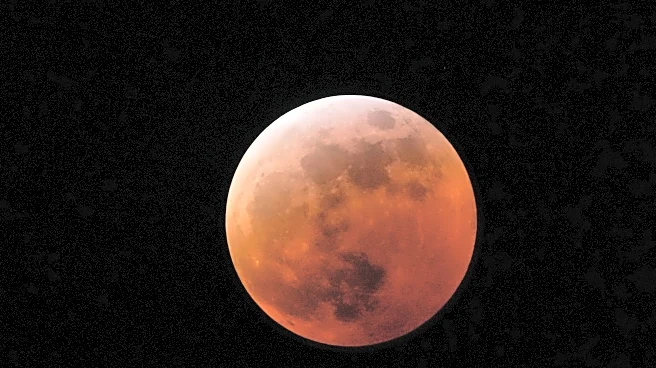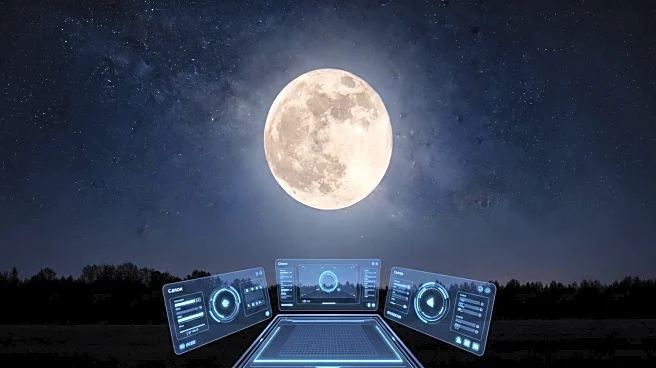What is the story about?
What's Happening?
The corn moon, the final full moon of summer, will rise on September 7, 2025, and coincide with a total lunar eclipse. This event will cause the moon to appear reddish, known as a blood moon. However, Californians will not be able to view this eclipse, as it will be visible in regions such as Europe, Africa, Asia, and Australia. The full moon will reach peak illumination at 11:09 a.m. PDT, and will appear full for a couple of days. The next total lunar eclipse visible in the U.S. is scheduled for March 3, 2026.
Why It's Important?
The blood moon and lunar eclipse are significant for astronomers and enthusiasts as they offer a rare opportunity to observe celestial phenomena. While the current eclipse is not visible in California or the U.S., it highlights the global nature of astronomical events and the interconnectedness of the Earth's position relative to the sun and moon. Such events can inspire interest in astronomy and science education, encouraging people to learn more about the universe. Additionally, the cultural significance of the corn moon, tied to agricultural cycles, underscores the relationship between natural events and human activities.
What's Next?
The next total lunar eclipse visible in the United States will occur on March 3, 2026, providing an opportunity for Californians and other Americans to witness this celestial event. In the meantime, astronomers and enthusiasts can prepare for other upcoming astronomical events, such as the October full moon, known as the hunter's moon, on October 6, 2025. These events continue to offer educational opportunities and inspire public interest in astronomy.
AI Generated Content
Do you find this article useful?
